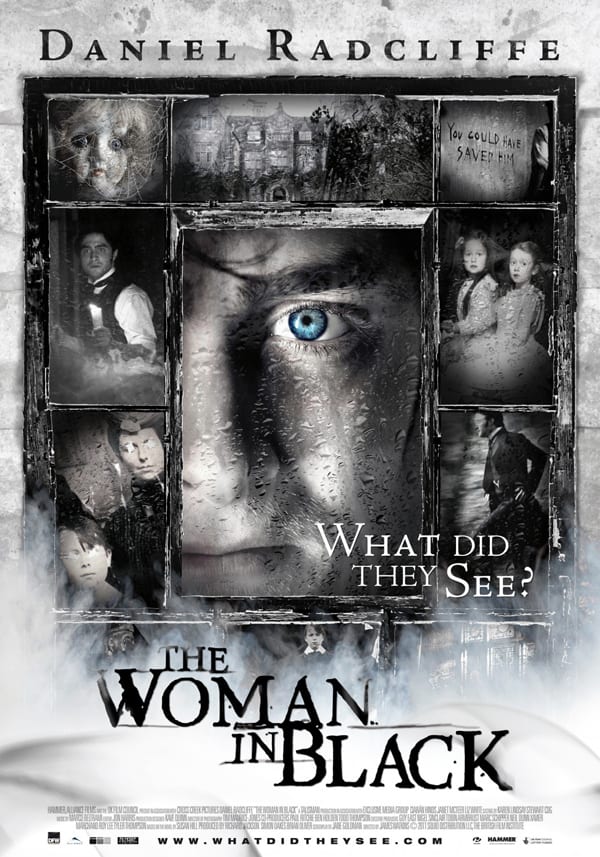Hammer Horror- Britain’s Studio of Blood: THE BRIDES OF DRACULA
 All month long I have been looking at the films that made Hammer one of the premier companies for horror films in the late 50’s and into the 70’s. When thinking of Hammer Studio’s productions involving vampires, many people obviously think of Christopher Lee. Lee, who portrayed the Count in seven Hammer films, was the embodiment of the sinister yet alluring vampire. Yet there was one actor who wore the iconic cape and fangs for what many consider one of the classiest films in the Hammer collection. The Brides of Dracula, may not have the star-power of Christopher Lee behind it but does it still have the bite?
All month long I have been looking at the films that made Hammer one of the premier companies for horror films in the late 50’s and into the 70’s. When thinking of Hammer Studio’s productions involving vampires, many people obviously think of Christopher Lee. Lee, who portrayed the Count in seven Hammer films, was the embodiment of the sinister yet alluring vampire. Yet there was one actor who wore the iconic cape and fangs for what many consider one of the classiest films in the Hammer collection. The Brides of Dracula, may not have the star-power of Christopher Lee behind it but does it still have the bite?
Not The Dracula Sequel The Studio Was Hoping For
With a script penned by veteran horror writer Jimmy Sangster, Hammer was hoping to resurrect the success of Horror of Dracula with a subsequent sequel. Unfortunately for the studio, there was a major obstacle that stood in the way: Christopher Lee did not want to return. For fear that he would be typecast if he played Dracula once more, Christopher Lee refused. This fear of Lee’s later proved true, when the British actor did return to play the character in Dracula – Prince of Darkness. With their lead actor out, Hammer was forced to completely re-think the project. After some re-writes that included changing the main villain from Count Dracula to Baron Meinster, Disciples of Dracula (Brides of Dracula’s original title) went into production. To helm the project, Hammer turned to their true and trusted stand-by, Terence Fisher. The amazing production design in the film once again was thanks to Bernard Robinson. Robinson created a much larger looking film than the film’s budget allowed. To keep some consistency with their previous vampire film, the studio brought back Peter Cushing to play the vampire hunter Van Helsing. Though casting Cushing was easy enough, filling the role of the cursed Baron was a much harder task. The studio went with a relatively unknown face: David Peel. This became the only lead role David Peel was to ever take, since he left acting after the film to pursue a career as an art dealer. The gamble of releasing a “Dracula” film without Christopher Lee in the lead proved to be a fruitful one as critics graced Brides of Dracula with much more praise than Hammer’s previous endeavors into Gothic horror.
The Brides of Dracula (1960)
The film opens with the pretty and innocent Marianne heading to the Lang Academy where she is to begin teaching. After a stop at a tavern, Marianne is mysteriously abandoned. Thankfully for her, the strange Baroness Meinster stops at the tavern and invites Marianne back to the castle. Once there, she discovers the Baroness’ young son chained up and forced in a secluded part of the castle. Thinking she is helping the Baron, Marianne releases him from his shackles only to find that in doing so she has set in motion a horrific chain of events.
The first half of the film is near-perfect. The story moves at an exciting pace creating mystery and intrigue regarding the motives of the Baroness and the captive state of the Baron. Through Fisher’s tight direction, he leads you to think the Baroness is the villain, but quickly turns the tables on the audience. Peter Cushing does a solid job (as always), yet the real stars are the ones that occupy the castle. Not only is David Peel great as the Baron, but Martita Hunt (the Baroness) and Freda Jackson (Greta – the housekeeper) both give amazing performances with what little screen time they are given. One of the creepiest scenes in the entire film involves Marianne investigating the source of some weird sounds in the castle. As she gets closer, she finds it is the housekeeper laughing in a state of hysterics over her discovery of the vampire’s first victim. It is truly an unnerving sequence. Later, the housekeeper is seen coaxing a recent victim from her shallow grave. Again … an effectively creepy scene. Though the rest of the film finishes out in an entertaining fashion, it is the first half that really creates some moody sequences. For me, the ending seemed a little thrown together and overly convoluted. Though worth mentioning, the ending does have a cool sequence where Van Helsing actually gets bit! In order to stop from turning, he is forced to cauterize the wound with a burning poker. All in all, Brides of Dracula is a solid entry for the studio, but I can’t help but think the sum of its parts is greater than the whole. Hammer proves though with this classic “Dracula” film that they can make an effective chiller without having the marquee names that audiences expect.
Throughout the month of October, you can watch many of these Hammer horror classics on Turner Classic Movies. For their complete schedule, click here.





